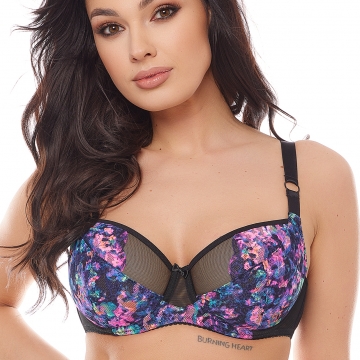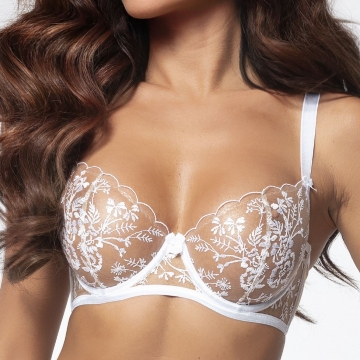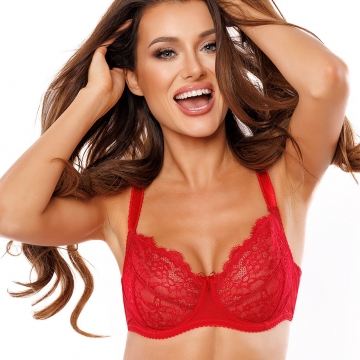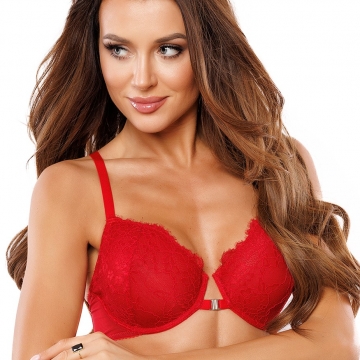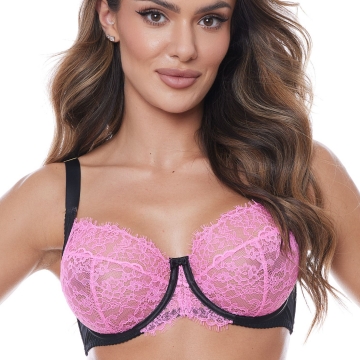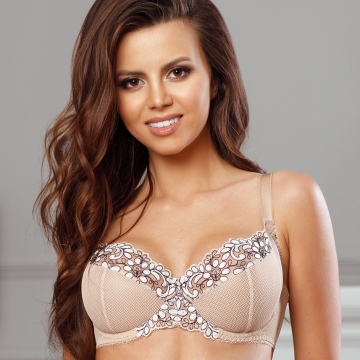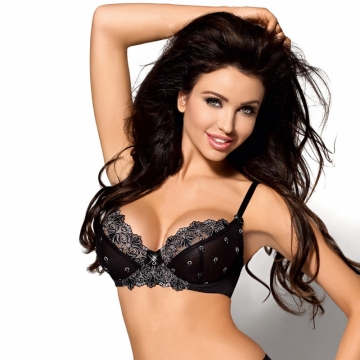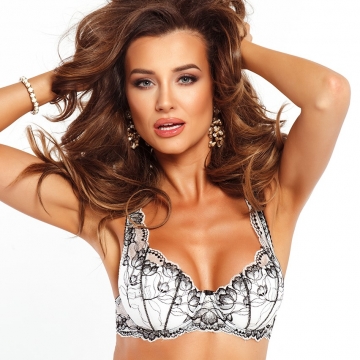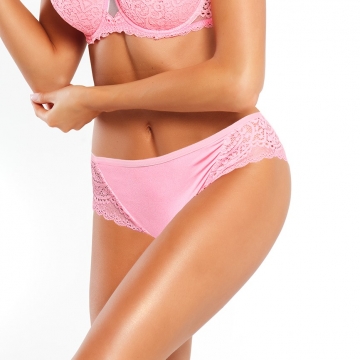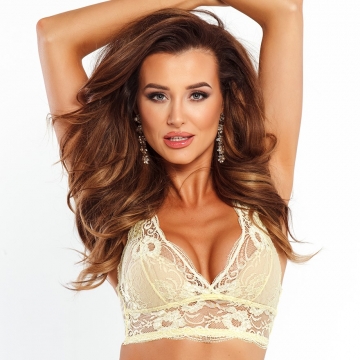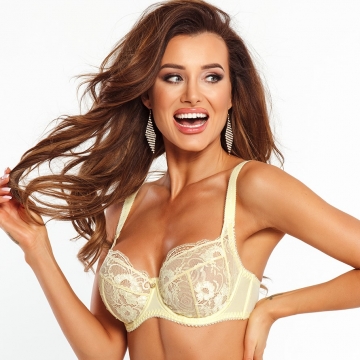My Guide To Choosing The Right Bra Size
Have you ever felt there is something terribly annoying about wearing a bra? Have you constantly pull the back or front of your bra down and it didn't want to stay in one place? The straps were digging in your flesh? Your breast was bulging over a cup or it actually popped out a couple of times? You are actually not the only one with this or similar experience. As many other women you were a victim of a wrong bra size! Wearing the right bra size is as important as choosing the right bra style. Don't even think that it is right to wear a bra that "more or less fits you". You have to feel absolutely comfortable with it and have no "buts". Did you know that bra size changes throughout lifetime? If the cloths don't fit you, you change them, why not a bra? Your breasts need to fill out the cups, but they can't overflow them. The fabric on cups shouldn't wrinkle. 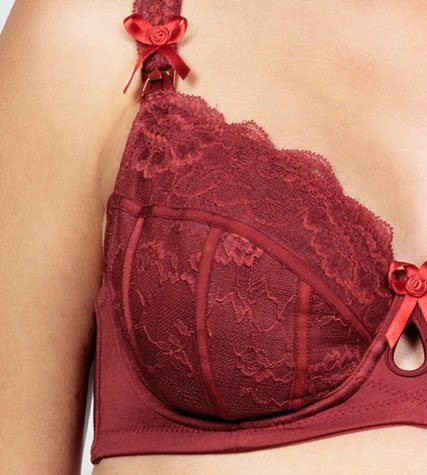 The edges of the cups should lie flat against your breast. There shouldn't be any gap or the edge can't cut your skin. Center of your bra has to lie flat against your breastbone. The bottom strap on the front and back is supposed to be parallel to the floor, the back of the bra may be a little lower than front, but absolutely can't slide up. An underwire should encircle your breast and its ends should sit comfortably on your ribs, not soft breast tissue. Your breast should be uplifted, it can't hang or fall to the sides. You have to be able to slide a finger behind the front of the band. The flesh can't bulge above a bra under the arm. When you sit, the band can't be too tight on your rib cage. Your breast line in the mirror must be perfect! Bra sizes are made of two components - band size (a number) and cup size (a letter). Single information, a cup size for example, doesn't say anything at all about your bra size. Cups are made in strict proportion to the band size. Therefore C cup is not the same in every bra. When you move to a different band size, you need to change a cup size as well. If you go down with your band size, but want to keep a cup in the same actual size, you need to pick a bra with larger cup and vice versa. You might not believe, but most of the women wear incorrectly sized bra! The most popular size women buy is 36C, although they are supposed to wear 34D, 38B or even 32DD(E)... There is a lot of descriptions on how you should measure you right bra size. None of them will tell you for sure, but I am introducing you a way that is most accurate and will help you decide the best. Just remember, body built of each woman is different and you might need to make adjustmeants if the bra still won't fit you the best way it can.
The edges of the cups should lie flat against your breast. There shouldn't be any gap or the edge can't cut your skin. Center of your bra has to lie flat against your breastbone. The bottom strap on the front and back is supposed to be parallel to the floor, the back of the bra may be a little lower than front, but absolutely can't slide up. An underwire should encircle your breast and its ends should sit comfortably on your ribs, not soft breast tissue. Your breast should be uplifted, it can't hang or fall to the sides. You have to be able to slide a finger behind the front of the band. The flesh can't bulge above a bra under the arm. When you sit, the band can't be too tight on your rib cage. Your breast line in the mirror must be perfect! Bra sizes are made of two components - band size (a number) and cup size (a letter). Single information, a cup size for example, doesn't say anything at all about your bra size. Cups are made in strict proportion to the band size. Therefore C cup is not the same in every bra. When you move to a different band size, you need to change a cup size as well. If you go down with your band size, but want to keep a cup in the same actual size, you need to pick a bra with larger cup and vice versa. You might not believe, but most of the women wear incorrectly sized bra! The most popular size women buy is 36C, although they are supposed to wear 34D, 38B or even 32DD(E)... There is a lot of descriptions on how you should measure you right bra size. None of them will tell you for sure, but I am introducing you a way that is most accurate and will help you decide the best. Just remember, body built of each woman is different and you might need to make adjustmeants if the bra still won't fit you the best way it can.
Measure your band size
Measure with a tape around your back to the front just under the bust.

Measure your cup sizeAfter measuremeant "38" the band size is the next higher even number. For example if your under bust measuremeant is 39, your band size is 40. The correct band size is the tightest one you can comfortably wear.
Measure with a tape around your back to the front in the fullest part of your bust. Subtract the second band measuremeant from your bust measuremeant. The difference in inches calculates your cup size. For example if your bust measuremeant is 37 and your band measuremeant is 33, the difference is 4, which indicates size D. Check the chart below for the right cup sizes and their equivalents in other countries.
| BAND MINUS BUST DIFFERENCE | US CUP SIZES | EUROPEAN | UK |
| less than 1" | AA | AA | AA |
| 1" | A | A | A |
| 2" | B | B | B |
| 3" | C | C | C |
| 4" | D | D | D |
| 5" | DD/E | E | DD |
| 6" | DDD/F | F | E |
| 7" | DDDD/G | G | F |
| 8" | DDDDD/H | H | FF |
| 9" | DDDDDD/I | G | |
| 10" | J | GG | |
| 11" | K | H | |
| 12" | L | HH | |
| 13" | M | J | |
| 14" | N | JJ | |
| 15" | K |
Tips
Bra sizes might change slightly from style to style and from brand to brand. Find your favorite style and know your size! Try to avoid buying bras that are cheap and of poor quality. It is better to have less bras that fit really well, rather than have more of those that are uncomfortable. Once you buy a bra, the band needs to fit well on the biggest adjustmeant. Smaller adjustmeants are for use later, as bands have a tendency to stretch after a while. The band should be tight enough to support the bust. The support shouldn't be provided primarily by the straps! If you are smaller on one side, buy a bra with a cup size that fits well the larger side and shorten the strap on the smaller side. If your breast is overflowing the cups, try a larger cup or just use a style with a fuller cup design. Bras can loose their fit easily if you wear them all the time. Try to avoid wearing the same bra two days in the row and care for it properly. Check the article "My guide to a perfect bra care"!







